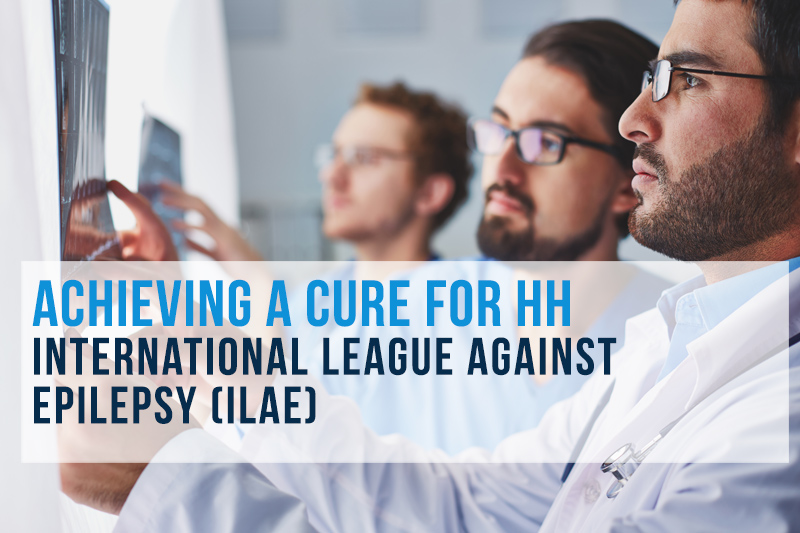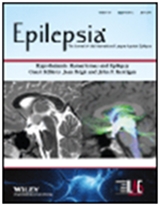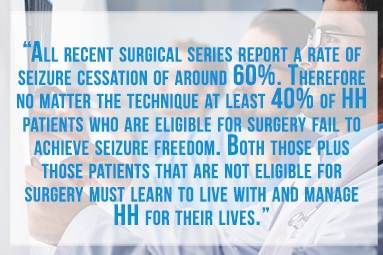
 In June 2017, Epilepsia, The Official Journal of the International League Against Epilepsy (ILAE), published a Special Issue titled: Hypothalamic Hamartomas and Epilepsy. Sincere thanks to international experts and HH Medical Advisory Board members Drs. Jean Regis, J. Helen Cross (Chair) and Jack Kerrigan for editing the supplement and bringing it to fruition. The supplement followed up the 2nd International Hypothalamic Hamartoma Symposium held in Marseille France in September 2013 with support from Hope for HH. We also are grateful to Elekta for making the supplement freely available online.
In June 2017, Epilepsia, The Official Journal of the International League Against Epilepsy (ILAE), published a Special Issue titled: Hypothalamic Hamartomas and Epilepsy. Sincere thanks to international experts and HH Medical Advisory Board members Drs. Jean Regis, J. Helen Cross (Chair) and Jack Kerrigan for editing the supplement and bringing it to fruition. The supplement followed up the 2nd International Hypothalamic Hamartoma Symposium held in Marseille France in September 2013 with support from Hope for HH. We also are grateful to Elekta for making the supplement freely available online.
 Hope for HH will summarize each of the 11articles in coming blogs. To access all articles, visit here or stay tuned for our layman’s highlights. Encourage you to begin by reading the first article, “Achieving a Cure for the Hypothalamic Hamartomas: A Sisyphean Quest?” which presents a concise history of the discovery of HH and the evolution in both treatment and treatment philosophy.
Hope for HH will summarize each of the 11articles in coming blogs. To access all articles, visit here or stay tuned for our layman’s highlights. Encourage you to begin by reading the first article, “Achieving a Cure for the Hypothalamic Hamartomas: A Sisyphean Quest?” which presents a concise history of the discovery of HH and the evolution in both treatment and treatment philosophy.
Highlights include:
- Epileptic HH was first described in 1969 with resection to treat the associated epilepsy.
- In the mid-1990’s, new understanding that HH was a subcortical epilepsy with the epileptic zone in the HH itself led to lesion resection becoming standard treatment for this drug-resistant epilepsy.
- Small series thereafter demonstrated that surgery could stop seizures, behaviors, and psychiatric co-morbidities but underreported the high number of surgical complications.
- In the early 2000’s, realization of increased surgical risks prompted the development of various alternative techniques with lower surgical risks including TAIF, endoscopy, disconnection, brachytherapy, radiofrequency thermo coagulation and radiosurgery.
- By the late 2000’s more neuropsych (short term memory) and endocrine complications (DI, endocrine dysfunction, hypothyroidism, growth hormone deficiency, post op weight gain) were reported to a varying degree for each of the newer interventions. Gamma knife had fewer of these complications and is the only method that has been evaluated in a prospective trial.
- By 2010, new stereotactic thermo coagulation methods using MR guidance were introduced into functional neurosurgery and tested in HH. However, the absence of randomized controlled trials comparing safety and efficacy of the different surgical approaches remains an obstacle to evaluation the different techniques.
- Key lessons learned and future directions:
- Surgeons need to precisely understand the anatomic location and extent of the HH to customize treatment to individual patients.
- Surgeons and researchers hypothesize that the connectivity may also be key in better planning surgical interventions.
- The concept of secondary epileptogenesis (other areas becoming epileptogenic) is gaining acceptance in HH and could be key toward cure.
- Looking ahead – one group proposed a novel approach to brain interventions based on personalized brain network models derived from non-invasive structural data of individual patients.





